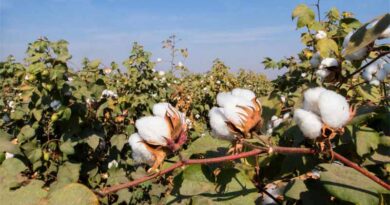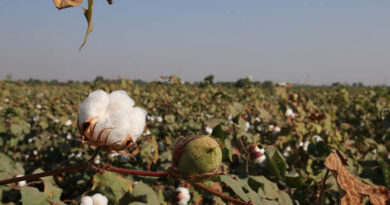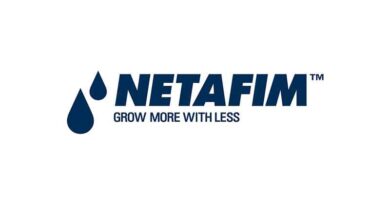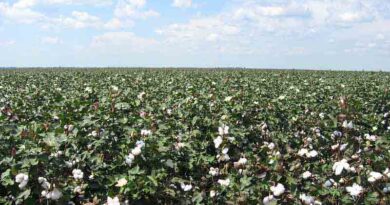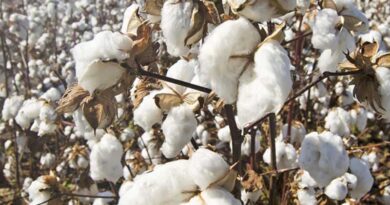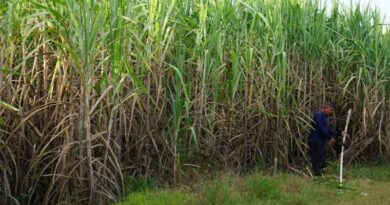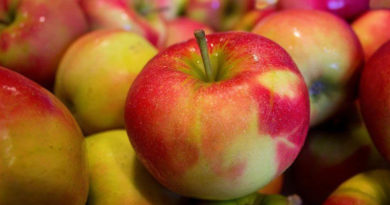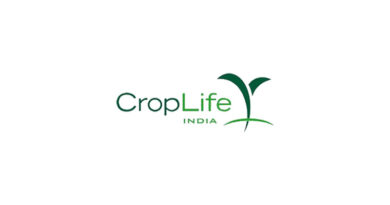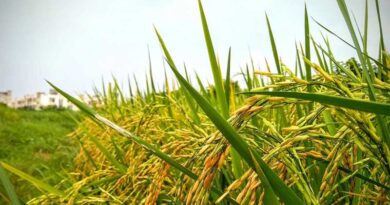Sustainable agriculture practices by cotton farmers in India will drive global demand
Guest Author: Mr. C.K. Patel, AGM – Agronomy & Marketing, Netafim India
09 July 2021, New Delhi: While India is one of the largest producers of cotton in the world, persistent adoption of unsustainable agricultural practices for the largely water-intensive crop, extensive use of fertilizers and pesticides as well as genetic modification has posed a significant challenge that needs immediate attention. There is still a gap in the yield level of cotton obtained in India vs. the global average. This means, higher land usage, but a lower income for farmers.
Presently, ~50 to 60 million people depend on cotton cultivation, marketing, processing and exports for their livelihood across India. In the last few years, the cultivation of cotton has been steadily declining globally and the world cotton farming experienced dramatic developments in 2020/21 due to an unprecedented pressure caused by the COVID-19 pandemic.
Also Read: FAO and the Netherlands renew partnership to strengthen sustainable water management in Yemen
Cotton continues to enjoy a pre-eminent and the most favoured fibre status for the textile industry globally as well as in India. It is an immensely important crop for the sustainable livelihood of the Indian cotton farming community.
Today less than 10 % of cotton is grown in a way that actively protects farmer’s economic growth and the environment. The latest trend suggests that the textile industry is becoming increasingly sensitive in choosing sustainable fibres to drive their textile supply chains since the outbreak of Covid-19. Hence, the buoyancy for a revival of Indian cotton farming is now driven by sustainable cultivation.
Indian cotton farming
India is one of the largest producers of cotton in the world accounting for about 26% of the world cotton production. The country has the largest area under cotton cultivation which is about 41% of the world area under cotton cultivation between 12.5 million hectares to 13.0 million hectares. The crop is mainly produced in Gujarat, Maharashtra, Andhra Pradesh, Haryana, Punjab, Madhya Pradesh, Karnataka, Rajasthan, Tamil Nadu, Odisha.
Modernization of India’s cotton production—including the adoption of BT varieties—propelled India to the top among cotton-producing countries. Government policies such as giving greater thrusts to Research and Development in cotton encouraging the use of quality seeds and pesticides by providing subsidies for such inputs and price support measures have also contributed to changing the cotton scenario in India.
Even with the impressive statistics of Indian cotton farming, the productivity per hectare has not reached its full potential over the years. Persistent adoption of unsustainable agricultural practices for the largely water-intensive crop, extensive use of fertilizers and pesticides as well as genetic modification has posed a significant challenge that needs immediate attention. There is still a gap in the yield level of cotton obtained in India vs. the global average. This means, higher land usage, but a lower income for farmers.
Sustainable practices for cotton farming in India
To turn around the prevailing scenario, it is imperative to make farmers aware of healthier cotton practices and adaptation of scientific farming techniques. Promotion of environmentally sustainable practices for the mass-produced cash crop along with the scientific and egalitarian application of water, effective use of fertilizers and pesticides will help the Indian farmers to achieve sustainable growth in cotton cultivation. Studies have proved that the adoption of suitable technology such as micro-irrigation in cotton farming helps in reducing input cost and increases income by increasing the number of crops they grow.
The benefits include an increase in the water use efficiency up to 80-90% owing to reduced water requirement, about 20% less consumption of electricity per hectare and up to 70- 80% increase in fertilizer use efficiency which translates into significant cost savings. Controlled application of water and fertilizer has resulted in increasing the productivity of the crops up to 50%. All these boost farmer income levels by more than Normal.
Besides the economic benefits, the technology boasts of a slew of social and environmental advantages as well. Since Indian farmers are receptive to take up any technology that brings certainty to their life and leads to an increase in income level, drip irrigation in cotton farming needs extensive propagation. The backbone of the success of micro-irrigation implementation in cotton cultivation remains in the awareness generation campaigns and effective training amongst farmers.


